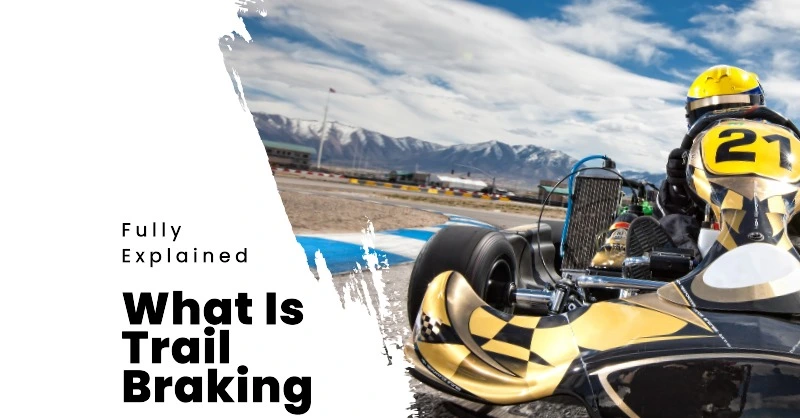Trail braking is an advanced driving technique that professional racers and driving enthusiasts employ. By providing better control over a vehicle during cornering, trail braking significantly enhances the overall driving experience. In this article, we will discuss the principles of trail braking, how to apply the technique effectively, and the advantages of incorporating it into your driving repertoire.
| Key Takeaways |
|---|
| Trail braking is an advanced driving technique that improves vehicle control during cornering by optimizing tire traction and minimizing grip loss. |
| The technique involves gradually releasing brake pressure while entering a corner, ensuring a smooth weight transfer from the rear to the front wheels for better steering response and control. |
| Mastering trail braking requires precision, skill, and a deep understanding of vehicle dynamics, including the effects of braking on balance and stability. |
| Trail braking benefits include faster cornering speeds, enhanced vehicle handling, improved lap times, increased safety, and versatility across various driving settings. |
| To master trail braking, practice in a controlled environment, start with moderate-speed corners, and monitor tire grip levels while experimenting with different brake pressures and release points. |
Related Article: Go-Kart Cornering Technique – Expert Tips for Winners
What is Trail Braking?
Trail braking is a driving technique that involves applying the brakes while entering a corner, allowing the driver to manage speed and maintain optimal control over the vehicle’s trajectory. The primary goal of trail braking is to maximize tire traction, minimize grip loss during cornering, and improve vehicle handling.
The Fundamentals Of Trail Braking
To fully understand and master trail braking, it’s crucial to familiarize yourself with its key components. Let’s look at the essential aspects of trail braking that contribute to its effectiveness. These aspects include:
- Weight Transfer: Trail braking enables smoother weight transfer from the rear to the front wheels by gradually releasing brake pressure throughout the corner. This optimizes grip, providing better steering response and control over the vehicle’s speed and direction.
- Vehicle Dynamics: To fully comprehend trail braking, it’s essential to understand the dynamics of your vehicle, including how it responds to varying road conditions and how braking affects its balance and stability.
- Timing and Finesse: Mastering trail braking requires precision, skill, and a keen sense of timing. Drivers must learn to apply and modulate brake pressure with finesse to balance, maintain grip, and prevent skids or loss of stability.
Trail Braking Technique: Step-by-Step Guide
The proper technique is vital to successfully executing trail braking and experiencing its benefits. In the following steps, we will outline the process of trail braking, allowing you to practice and refine this advanced driving skill with confidence.
- Begin by applying the brakes before entering a corner to reduce your speed to the desired entry level.
- As you approach the corner, start easing off the brake pedal while simultaneously turning the steering wheel. This transfers the vehicle’s weight towards the front wheels, increasing traction and steering response.
- Gradually release the brake pedal as you progress through the corner, ensuring brake pressure decreases smoothly to maintain stability and control.
- Upon reaching the apex of the turn, gently transition from the brake pedal to the accelerator, allowing for a smooth exit from the corner.
Introduction to Advantages of Trail Braking:
Trail braking is more than just a technique for professional racers; it offers a variety of advantages for drivers in different settings. The primary benefits of incorporating trail braking into your driving skills emphasize its impact on performance and versatility.
- Improved Performance: Trail braking leads to faster cornering speeds, better handling, and improved lap times for racers. It also enhances overall driving skills, making drivers more adaptable and proficient on various road types and conditions.
- Enhanced Safety: Trail braking increases safety by providing better control and balance during high-speed maneuvers. This technique can be particularly useful in emergencies or when executing evasive maneuvers.
- Versatility: Trail braking is a versatile skill that can be applied in motorsports and everyday driving. Its mastery enables drivers to experience improved performance on racetracks and enhanced safety on public roads.
Advanced Trail Braking Concepts
At first glance, one might assume that trail braking is a relatively simple technique, similar to basic arithmetic or sentence construction. However, upon further exploration, it becomes apparent that this assumption is inaccurate.
Advanced trail braking concepts reveal this driving technique’s intricacies and sheer elegance. Developing proficiency in trail braking requires a deep understanding of vehicle dynamics and tire traction.
Aspiring trail brakers must skillfully modulate brake pressure while navigating challenging corners at high speeds to achieve optimal tire grip and vehicle control, showcasing human ingenuity and dedication to pushing the limits of automotive performance.
Does Trail Braking Make You Faster
Having delved into the complexities of trail braking, examining its influence on driver performance, specifically lap times is crucial. Trail braking’s primary goal is to enable racers to enter corners at higher speeds while maintaining control of their vehicles, prompting curiosity about its effect on overall speed and performance.
Upon investigation, it is clear that trail braking can indeed lead to improved lap times for many drivers. By smoothly transitioning from the brake pedal to the accelerator, racers can maintain greater momentum through corners, enabling them to exit at higher speeds.
Furthermore, this technique ensures better weight distribution across all tires during cornering, enhancing vehicle stability and grip.
As a result, drivers who employ trail braking often experience heightened confidence and precision on various circuits, ultimately leading to faster racing outcomes.
When To Trail The Brakes
To maximize trail braking’s effectiveness, it is crucial to understand when to engage the technique. Typically, trail braking should be initiated immediately after releasing the throttle upon approaching a turn or curve.
As the driver turns into the corner, brake pedal pressure should gradually decrease until fully released before reaching the apex. This smooth reduction in brake force enables fluid weight transfer and ensures consistent tire traction throughout the maneuver.
Using Trail Braking To Cured Balance Issues
Trail braking is akin to an intricate dance between driver and vehicle, involving applying the brakes throughout the cornering process.
This advanced driving technique enables better vehicle control during turns by transferring weight from the rear to the front wheels, creating a more balanced distribution of forces. Consequently, this can lead to quicker cornering speeds and improved handling.
Effectively implementing trail braking can address balance issues that may arise when navigating high-speed bends. The key is to ease off the brake pedal while entering a turn gradually, ensuring sufficient pressure remains on the front tires for optimal grip. By adjusting brake input throughout the corner, drivers can fine-tune their vehicle’s behavior and address understeer or oversteer tendencies.
Ultimately, mastering trail braking is essential for achieving enhanced precision and confidence behind the wheel.
Tips For Mastering The Technique
To master trail braking, drivers should practice consistently and develop a deep understanding of their vehicle’s limits. One helpful tip is, to begin with, a gradual brake pressure application before reaching the corner, then slowly releasing it while turning. This action increases front-wheel weight transfer, enhancing traction and steering effectiveness.
Proper timing is another crucial consideration; avoid releasing the brakes too early or too late, as this
could negatively impact your balance and control throughout the maneuver.
Remember that mastering trail braking requires time, patience, and dedication. However, once proficient, this skill can significantly enhance your driving capabilities and overall performance on the road or track.
Additional tips for mastering trail braking include:
- Familiarize yourself with your vehicle’s braking system and responsiveness to understand better how it reacts to varying brake pressures.
- Start with moderate-speed corners to build confidence and gradually progress to more challenging, high-speed corners as your skill and comfort level increase.
- Monitor your tire grip levels and learn to identify when you are approaching the limits of traction to avoid overextending your vehicle’s capabilities.
- Experiment with different brake pressures and release points to find the optimal balance between speed and control for each corner.
- To minimize risks and potential consequences, practice trail braking in a safe, controlled environment, such as a closed track or driving course.
Related Article: Go-Kart Braking Technique Guide
Conclusion
Trail braking is a highly valuable driving technique that offers numerous benefits, from improved performance to enhanced safety.
By understanding the fundamentals and diligently practicing the technique, aspiring racers and driving enthusiasts can elevate their skills, optimize vehicle control, and conquer corners with confidence.


